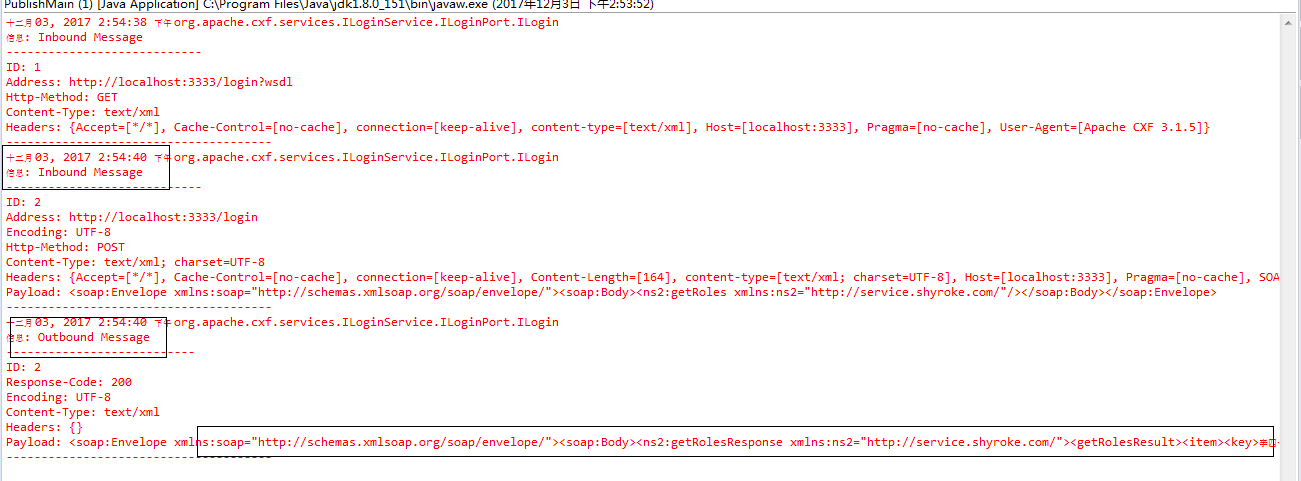一、需求分析
- webService中的拦截器类似于servlet的Filter过滤器。一般用于调用服务前后先调用拦截器的方法。
二、案例
-
本章案例是基于上一章节的基础上添加拦截器的
2.1 服务端添加拦截器
ublic class PublishMain { public static void main(String[] args) { String address="http://localhost:3333/login"; JaxWsServerFactoryBean factoryBean=new JaxWsServerFactoryBean(); factoryBean.setAddress(address); factoryBean.setServiceClass(ILogin.class); factoryBean.setServiceBean(new Login()); /** * 添加In拦截器 日志拦截器 * 添加Out拦截器 日志拦截器 */ factoryBean.getInInterceptors().add(new LoggingInInterceptor()); factoryBean.getOutInterceptors().add(new LoggingOutInterceptor()); factoryBean.create(); System.out.println("服务发布......."); } }
2.2 在客户端添加拦截器:必须引入cxf的jar包
public class Client { public static void main(String[] args) { ILogin login=new ILoginService().getILoginPort(); org.apache.cxf.endpoint.Client client=ClientProxy.getClient(login); /**
* 添加In拦截器 日志拦截器
* 添加Out拦截器 日志拦截器
*/
client.getInInterceptors().add(new LoggingInInterceptor()); client.getOutInterceptors().add(new LoggingOutInterceptor()); MyRoleArray roles=login.getRoles(); List<MyRole> roleList= roles.item; for(MyRole role:roleList) { System.out.println(role.getKey()); for(Role r:role.getValue()) { System.out.println(r.getId()+"\t"+r.getRoleName()); } System.out.println("------------------"); } } }
2.3 测试
- 上面的配置已经把拦截器添加好了,当发布服务后,客户端执行后,首先,查看客户端的控制台

由此可见,客户端是先进后出(先发送请求再接收数据)。
- 再查看服务端的控制台,可见服务端是先进后出。





 本文介绍如何在WebService中使用拦截器,包括服务端和客户端的配置方法,并通过具体案例展示了拦截器的日志记录功能。
本文介绍如何在WebService中使用拦截器,包括服务端和客户端的配置方法,并通过具体案例展示了拦截器的日志记录功能。
















 625
625

 被折叠的 条评论
为什么被折叠?
被折叠的 条评论
为什么被折叠?








